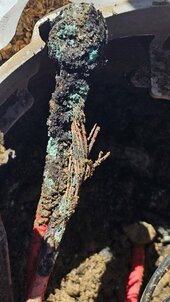I'm in a similar situation as OP and could also benefit from clarification (I'm shining the timselectric bat signal).
I have an off grid system with a Victron Multiplus II 48/3000 inverter with the AC out back feeding 120v into a sub panel (6 spaces, 12 circuits). I have a small 2600W floating neutral generator that I plan to connect to the inverter. The default behavior of the Multiplus is to disable its own N/G bond when the AC supply is connected (in my case, I start up the generator).
I'm thinking that it would be just as well to fully disable the N/G bond on the Multiplus and put the N/G bond in the sub panel (read: main panel), then connect the sub panel directly to my DC grounding bus bar (which is connected to the EGC).
This saves me from using a N/G plug on the generator, and I think should also allow me to avoid having to bond the generator frame to the ground system. Does this make sense?









